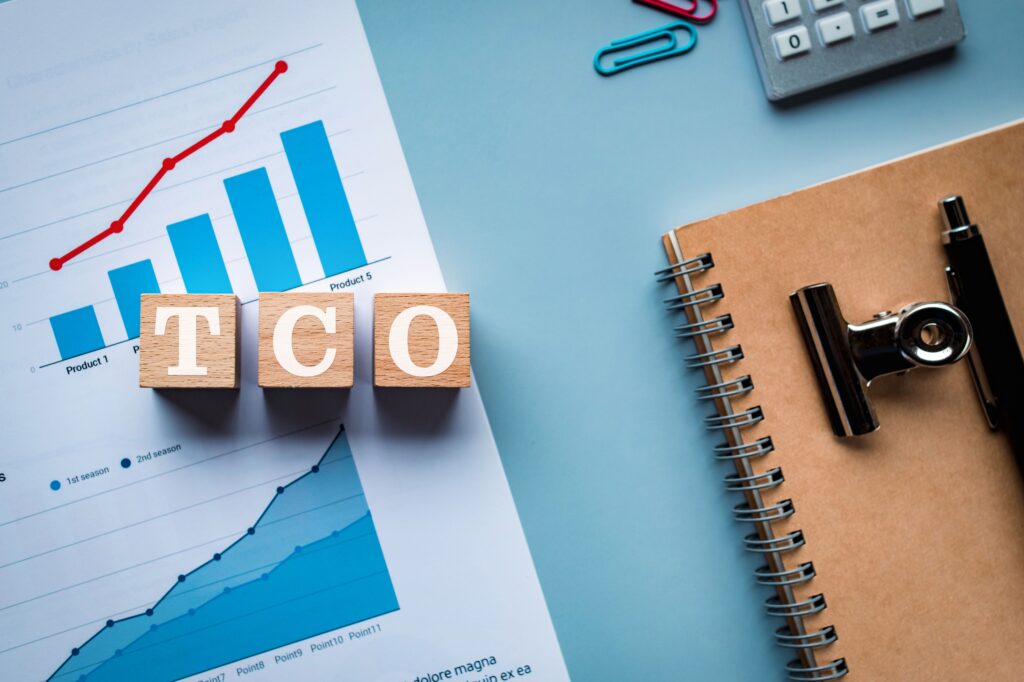
Technologists charged with managing total cost of ownership (TCO) programs obviously want to make accurate assessments of the full scope of IT investments that an organization has made. The results of a TCO assessment can have a huge impact on setting and meeting IT budgets.
It is also important to get cost ownership right, since the business side of any organization may contribute hardware, software, and occasionally even staff, to overall tech systems.
The challenge for IT leaders is separating IT-driven investments from business-driven ones to ensure accurate ‘bookkeeping.’ An even more difficult task may be finding legitimate methods for reducing IT’s share of the pie.
Market trends are also impacting TCO strategies. These include a growing number of organizations moving applications from the cloud back to on-premise systems, and the impact that AI is having on nearly all aspects of IT processes.
“The biggest takeaway is how quickly the cloud conversation is shifting and how AI is reshaping the cost equation,” explains Regina Manfredi, president of North America at SoftwareOne. Manfredi was formerly executive vice-president and general manager at IT consultancy firm Crayon US before its recent acquisition, and works directly with CIOs and IT leaders to address these challenges.
Crayon recently released the 2025 IT Cost Optimization Playbook (based on 2,000 global IT leaders), highlighting where TCO is being reduced and where hidden costs are popping up.
“Our report found that 96% of IT leaders are planning to move at least some workloads back on-premise, with an average of 37% of infrastructure spend earmarked for that shift. At the same time, 40% say AI spend will be their top cost challenge in the next three years.”
The technology elements of an IT TCO calculation
From a strictly technology perspective, a strong IT TCO strategy incorporates licensing, cloud services, labor, training, support, governance, and increasingly, sustainability. The most effective leaders view TCO as the full lifecycle of IT investments—from upfront procurement to ongoing management and eventual decommissioning, Manfredi says.
The most advanced organizations don’t treat IT spend as sunk cost, rather they model its impact on growth, risk reduction, and customer outcomes
At the City of Corona, CA, IT leaders have developed a TCO strategy that attempts to capture all lifecycle costs related to any tech acquisition and all related and subsequent expenses, explains CIO Chris McMasters. This includes initial acquisition, licensing, implementation, operations, maintenance, upgrades, and deprecation when it is time to retire it. Under those cost categories are hardware, software, cloud services, labor, vendor contracts, energy use, security compliance, and facilities costs.
“I also include indirect costs like training, productivity impacts, and business process changes because they help balance the value equation,” McMasters says.
But a complete total cost of ownership calculation obviously goes far beyond traditional IT infrastructure and applications. Many elements in the calculation are based on business results enabled by technology.
In short, an effective IT TCO strategy goes beyond tracking expenses, says Hugh Cumming, CTO at financial planning and analysis firm Vena Solutions. It connects technology costs to business outcomes. Vena therefore helps IT leaders see the full financial picture, from acquisition and operations to efficiency gains, so they can maximize the return on every IT investment.
Elements that cause wrinkles in TCO strategies
There are a number of elements in TCO calculations that can cause problems for IT leaders.
Errors usually stem from excluding integration costs, underestimating support requirements, ignoring depreciation, failing to plan for software renewals – that never decrease and usually always escalate – or infrastructure refresh cycles caused by shifting priorities, McMasters explains.
For the most accurate results, TCO should be embedded into an organization’s capital planning and budgeting process. This means running TCO models before procurement decisions, updating them annually, and using them as a decision filter for technology investments. Incorporating TCO into long term strategies decreases friction and streamlines IT projects because it increases transparency for the organization.
Also, licensing is notorious for errors, says Greg Bibeau, CEO at IT services firm Terminal B. “I’ve seen companies overspend because they didn’t track renewals or consolidate agreements. Infrastructure refresh cycles are another troublesome spot — waiting until an equipment failure absolutely results in emergency spending that can blow up your budget.”
TCO should never be just calculated on its own. It should always be driven by business outcomes. For example: cloud migration may not seem worth the effort and expense, at least initially — the average cost per workload is traditionally more expensive – but it can significantly reduce operating costs in three years. Rolling TCO into quarterly business reviews helps keep IT in line with revenue and risk priorities, Bibeau says.
Organizations should treat IT TCO as a strategic lens, not just a financial exercise, building it into planning by linking technology costs and benefits directly to business goals, future scenarios and long-term value creation.
TCO strategies should also involve finance, procurement, and business leaders. In practice, this means making TCO part of vendor negotiations, investment decisions, and board-level reporting. The most advanced organizations don’t treat IT spend as sunk cost, rather they model its impact on growth, risk reduction, and customer outcomes, Cumming says.
Steps for reducing total cost of ownership
There are steps that IT leaders can take to reduce IT total cost of ownership, Manfredi says.
- Improve visibility. If you can’t see your spend, then you can’t steer it.
- Embed financial accountability practices into decision-making. Crayon’s report found more organizations now have certified FinOps professionals than IT asset managers.
- Right-size. Eliminate unused SaaS seats, shut down dormant workloads, and resize cloud instances to demand.
- Take the long view. Training, governance, and sustainability may feel like extra costs today, but they prevent expensive mistakes tomorrow.
Bibeau recommends that IT leaders adopt a proactive lifecycle management approach. This includes planning refresh cycles, standardizing platforms, and negotiating licenses before renewal. This helps avoid surprise spending and reduces costs dramatically. If managers can also map decisions to an outcome, it’s easier to justify investments that result in a lower long-term TCO.
“We planned refresh cycles and negotiated licensing agreements early, which has kept our clients from emergency spending and saved them 15-20%,” Bibeau explains. “Enforcing some degree of uniformity in platforms and tools across environments also simplifies support and training, and reduces total operating costs.
It’s also helpful to look at the total cost of ownership holistically. Invest in scalable, well-integrated solutions, avoid underestimating hidden costs and focus on automation and governance to reduce complexity over time. Reduce vendor counts by focusing on fewer strategic platforms to run the business and invest in data integration skills to bring systems together and reduce duplication of functionality.
McMasters recommends standardizing platforms where possible, consolidating vendors, adopting cloud where cost-effective, investing and training staff to reduce external dependency, and negotiating flexible contracts with built-in upgrade paths. Organizations should use AI in preventive maintenance and analytics to predict failures before they happen and to predict future investment.
TCO should be viewed through a lens of long-term benefits
With this advice in mind, McMasters says IT leaders should view TCO as not just a tool about lowering cost, but for making informed, future-proof investments while increasing efficiency and productivity.
“When managed well, TCO becomes a governance tool that balances IT stewardship with the ability to innovate and deliver better public services,” McMasters says.
Bibeau agrees, and says the need for total transparency is the biggest lesson he has learned over the past few years.
“IT leaders who are willing to share data with analysts, CFOs, business units and then clarify and explain the IT budget absolutely create trust, and make better long-term decisions,” Bibeau explains. “TCO is more than just about controlling costs, it is also about delivering measurable value for IT investments going forward.”
A key lesson is that decisions around technology can’t be made in a silo. They should be driven by business outcomes.
For example, some clients were wary of investing in cloud migration because the initial outlay was expensive, Bibeau says. But over a three-year period, organizations saw their operating costs drop by almost 30% because they were no longer burdened with infrastructure maintenance and having to pay for excessive licensing.
“Transparency is one of the best ways to counter these,” Bibeau says. “Communicating regularly with industry analysts and other influencers absolutely helps build confidence in IT decision makers so that they can show positive ROI to the business.”
link







